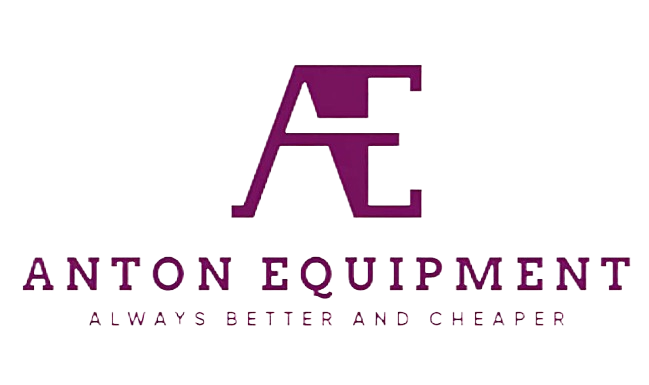News
Understanding Earth Augers: Essential Tools for Efficient Drilling
What is an Earth Auger?
An Earth Auger is a power-driven tool specifically designed to create circular holes in the ground. It is commonly used for tasks such as planting trees, shrubs, or installing fence posts. This versatile tool utilizes a rotating helical screw blade that efficiently excavates soil, drawing it upward through its mechanism. As a result, it eliminates the need for extensive manual labor, making it an essential equipment in landscaping, gardening, and other earth-moving tasks.
The basic functionality of an Earth Auger revolves around its helical screw blade. When operational, the blade digs into the soil and continuously lifts it toward the surface. This not only allows for precise and uniform holes but also speeds up the entire digging process. Moreover, Earth Augers come in various sizes and types, from small handheld devices to larger models suited for heavy-duty tasks. This versatility ensures that users can select an auger best suited for their specific needs, allowing for efficient work on different soil types and project requirements.
Types of Earth Augers
Earth augers are versatile tools that come in various types to cater to different digging needs. Here, we'll explore three primary types: handheld, gas-powered, and electric earth augers.
Handheld Earth Augers
Handheld earth augers are lightweight and portable, making them ideal for small gardening tasks. These augers are easy to maneuver and can be operated by a single person, providing convenience for quick and simple jobs. Typically powered by gas or electric engines, they are designed for less intensive tasks and offer an excellent choice for those who require a straightforward tool for planting bulbs or small plants in soft soil.
Gas-Powered Earth Augers
For more demanding tasks, gas-powered earth augers provide the power necessary to manage tougher soil conditions and larger projects. These augers are suitable for commercial use, such as landscaping and agricultural tasks, due to their robust engines that offer more torque and the ability to dig deeper and wider holes. When choosing a gas-powered auger, it is important to consider factors like weight and fuel type, as these can impact both portability and efficiency.
Electric Earth Augers
Electric earth augers are best suited for residential use, where minimal environmental impact is desired. These tools are quieter and produce fewer emissions compared to their gas-powered counterparts, making them more environmentally friendly. However, electric augers typically have less torque, which may limit their effectiveness to softer soil types. They are a practical option for those looking to maintain a peaceful environment while performing moderate digging tasks.
Applications of Earth Augers
Gardening and Planting
Earth augers have revolutionized gardening applications, making them an essential tool for efficient planting. By allowing gardeners to create neat and precise holes quickly, they significantly reduce the labor traditionally involved in gardening. This tool is particularly beneficial for planting bulbs, shrubs, and trees, ensuring that each plant is placed at the correct depth, which is crucial for healthy growth. Augers streamline the planting process, thus saving both time and effort for garden enthusiasts.
Fence Post Installation
Installing fence posts can be a labor-intensive task, but earth augers simplify this process with their efficient digging capabilities. By preserving the integrity of the surrounding soil, they help in maintaining the original landscape even after installation. Moreover, using an earth auger ensures that the holes are uniform, which contributes to the stability and longevity of the fence structure. This uniformity is crucial for ensuring that each post is aligned correctly, reducing wear and tear over time.
Construction and Landscaping
In the realm of construction, earth augers offer invaluable assistance for creating holes necessary for building foundations, utility poles, and other structures. They enable precise placement, which is vital for foundational stability. Similarly, in landscaping, augers play a crucial role by setting trees or shrubs accurately while minimizing disturbance to existing vegetation. This precise capability ensures that new landscaping complements existing features, creating a harmonious and aesthetically pleasing environment.
Choosing the Right Earth Auger
Factors to Consider
Selecting the appropriate earth auger requires careful consideration of various factors like the size of the job and soil conditions. First, assess the job requirements—small, handheld augers suffice for light tasks, but larger projects demand more robust options. It's crucial to understand soil conditions; rocky or clay-rich areas may necessitate more powerful augers to penetrate effectively. Additionally, the ease of transport should be considered, particularly for those who need to move equipment frequently. Evaluating noise levels, emissions for gas models, and user comfort—such as adjustable handles—can significantly influence long-term satisfaction.
Matching Auger to Soil Type
Different soil types require specific earth auger designs to ensure efficiency and longevity. For instance, lighter augers are perfect for loose, sandy soils, whereas heavy-duty models are essential for harder soils like clay or areas with frequent rocks. To determine the most suitable auger, conducting a soil test is advisable. By knowing the soil composition, you can match the auger design to your exact needs, ensuring optimal performance.
Power and Torque Requirements
Understanding the power and torque requirements is fundamental when choosing an earth auger. The energy needs vary significantly between light garden work and heavy-duty construction tasks. Generally, larger augers with higher torque are necessary for deep or demanding projects like construction foundations or drilling in tough soil. Conversely, smaller tasks may require less power-intensive models to achieve efficiency without compromising performance.
Maintenance and Safety Tips
Cleaning and Lubrication
Regular maintenance, such as cleaning and lubrication, is essential to maximize the lifespan of an earth auger. After using the auger, cleaning it thoroughly helps prevent soil and debris buildup, which can lead to rust and operational inefficiencies. Additionally, lubrication of moving parts following the manufacturer's recommendations reduces friction, preventing premature wear and ensuring smooth operation. Prioritizing these maintenance steps enhances the tool's longevity and performance.
Blade Sharpening and Replacement
Routine blade sharpening is crucial for maintaining the efficiency of an earth auger. Dull blades not only increase the strain on the motor but also make the tool less effective in drilling through the soil. Knowing when to replace blades is equally important; worn blades can compromise performance and lead to increased operational costs. Regular checks and timely replacement of blades ensure that the auger functions optimally throughout its lifecycle.
Safety Precautions During Use
Implementing safety precautions is vital when operating an earth auger to prevent accidents. Operators should always wear appropriate safety gear, such as gloves, goggles, and sturdy footwear, to protect themselves from potential hazards. Adhering to the operating instructions and ensuring a clear work area further enhances safety. By maintaining a safe environment and using the tool correctly, operators can minimize risks and ensure efficient and secure usage of the earth auger.












































